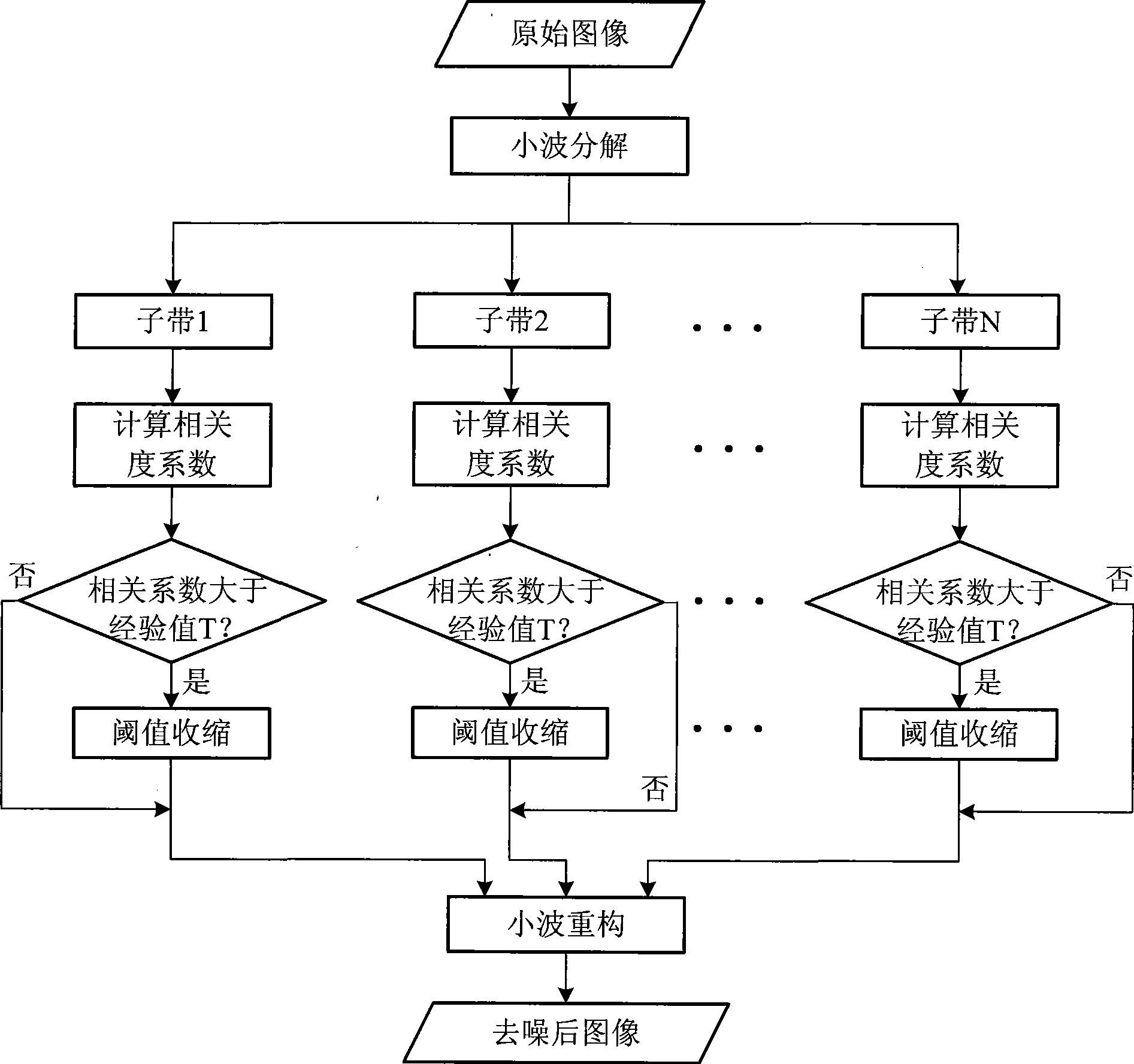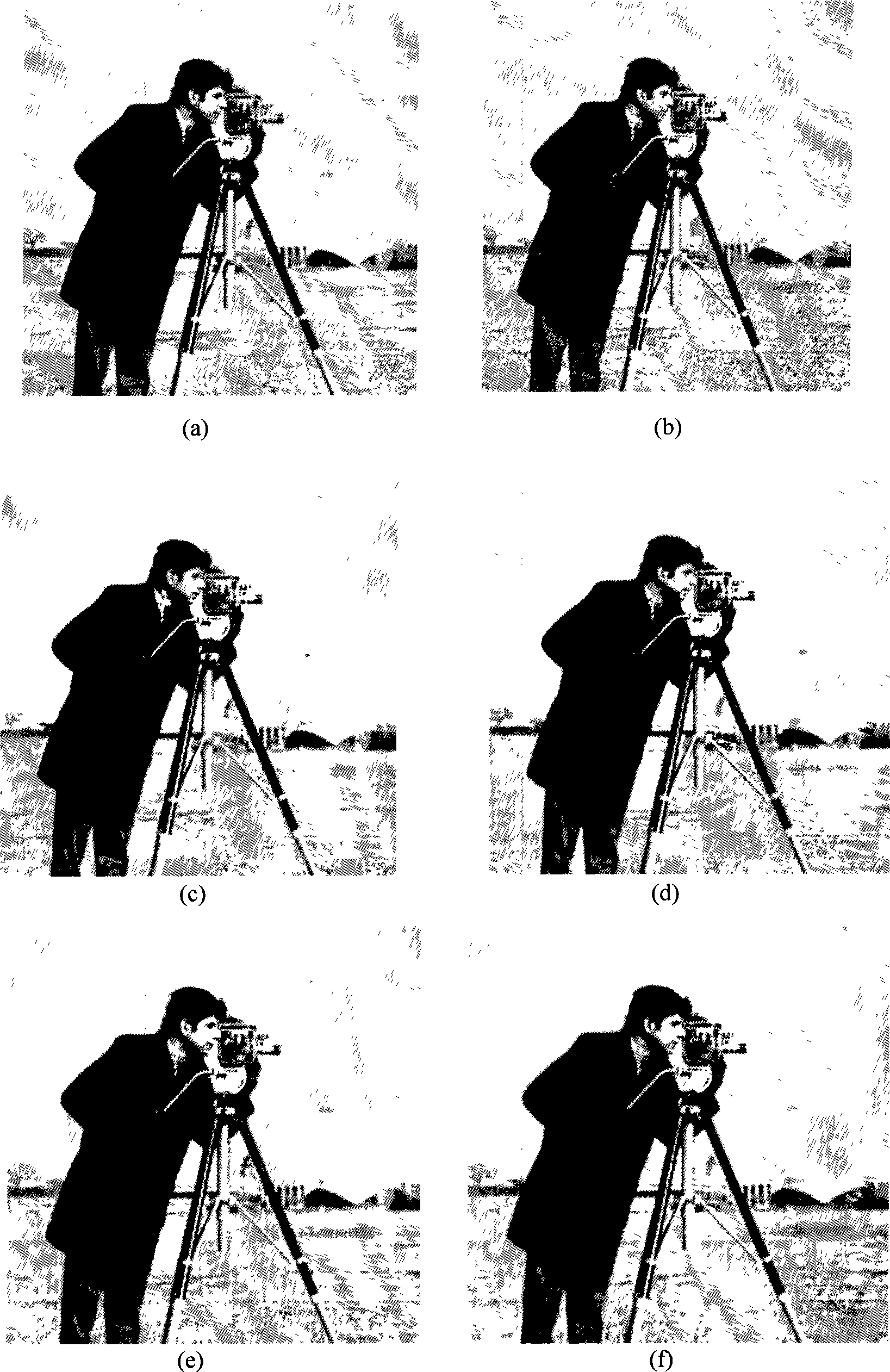Wavelet image denoising process based on sliding window adjacent region data selection
A technology of image noise reduction and data selection, which is applied in the field of image processing, can solve problems such as blurred images, and achieve good image edge protection effects and high peak signal-to-noise ratio effects
- Summary
- Abstract
- Description
- Claims
- Application Information
AI Technical Summary
Problems solved by technology
Method used
Image
Examples
Embodiment Construction
[0016] The present invention will be described in further detail below by means of the accompanying drawings and examples.
[0017] 1. Image transformation
[0018] The noise-added image is subjected to wavelet transformation to obtain the wavelet coefficient matrix, which is decomposed into 4 layers. The wavelet base is sym8 wavelet, and the empirical value T is 0.2.
[0019] The wavelet transform is derived as follows:
[0020] Let one-dimensional multiresolution analysis {V j}'s two-scale equation and wavelet equation are
[0021] φ ( t ) = 2 Σ k h k φ ( 2 ...
PUM
 Login to View More
Login to View More Abstract
Description
Claims
Application Information
 Login to View More
Login to View More - R&D
- Intellectual Property
- Life Sciences
- Materials
- Tech Scout
- Unparalleled Data Quality
- Higher Quality Content
- 60% Fewer Hallucinations
Browse by: Latest US Patents, China's latest patents, Technical Efficacy Thesaurus, Application Domain, Technology Topic, Popular Technical Reports.
© 2025 PatSnap. All rights reserved.Legal|Privacy policy|Modern Slavery Act Transparency Statement|Sitemap|About US| Contact US: help@patsnap.com



